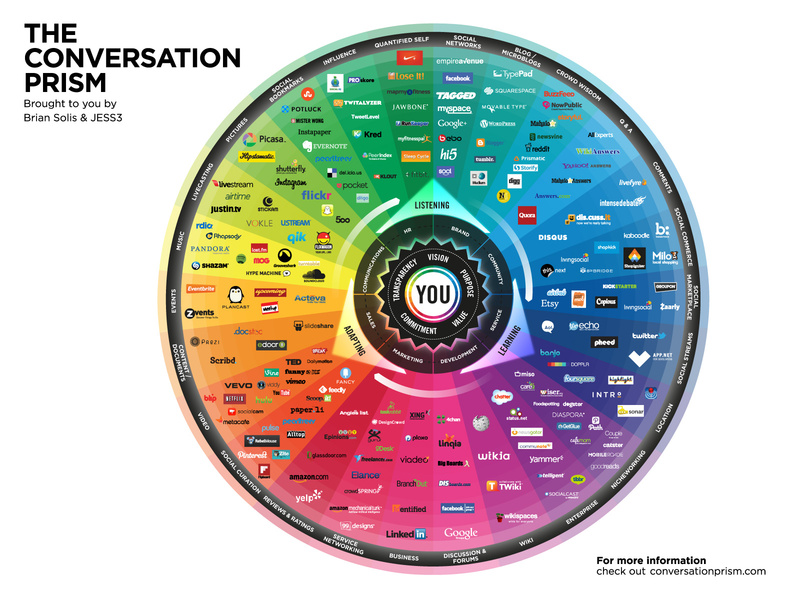e-Learning Ecologies MOOC’s Updates
TO TWEET OR NOT TO TWEET
The image above is a good start to the question "What is 'social media learning'?" Looking at this old-fashioned chalkboard, my first impression is that "social media," without the word "learning" attached, is a mishmash of various and ever more present technologies that allow one to share and exchange ideas and information digitally.
Social media has availed most of the world to informal learning. These digital ways of interacting have disrupted the previous mass marketed sources of information and knowledge. Information about the most obtuse or abstract subject can be found quickly with the press of a few keys, or even more impressively now, with a vocal question or comment to a personal digital assistant like Amazon Echo, Siri, Cortana or Google Home. No longer does a person need to sit at a computer or pull out her smartphone or iPad. Information can be found on the fly. Here is a great example of this new scenario:
Social Media learning is the directive to connect, communicate, curate, collaborate and create (the 5Cs as described by Sue Beckingham and Chrissi Nerantzi (2015). BYOD4L: learning to use own smart devices for learning and teaching through the 5C framework. In: MIDDLETON, Andrew, (ed.) Smart learning: teaching and learning with smartphones and tablets in post-compulsory education. MELSIG, Sheffield Hallam University, 108-127.) The learning part, therefore, includes an end-goal of acquiring social knowledge of a particular topic that is being presented in an educational setting.
The first site to come to mind when we think of "social media" would most likely be Facebook. According to statista, the Statistics portal, total Facebook audience in the United States amounted to 214 million users. With more than 1.8 billion monthly active users, Facebook is the most popular social network worldwide, with users in the United States spending an average of 39 minutes on the site every day in 2014 (https://www.statista.com/statistics/398136/us-facebook-user-age-groups/).
These vast numbers demonstrate social media’s penetration into the everyday lives of many global citizens. The learning curve for incorporating social media as a tool for learning is less steep as more people become Facebook-savvy.
While Facebook, Twitter, Instagram, Pinterst and LinkedIn are the most well-known social media sites, there are literally thousands. The chart below lists the known sites as of 2016.
The challenge for educators is to move social media beyond their uses as personal tools of informal sharing and knowledge-seeking to their being accepted as tools for educational purposes. (Some reticent students may be hoisting the “Don’t Tread on Me” flag from the American Revolution to protest that personal and school lives should not intersect!) A larger challenge, however, may be to understand the role of social media’s “tailored or personalized content” and its effect on information gathering. Upworthy CEO Eli Pariser coined the term “filter bubble,” which is explained in the video below.
Understanding that everyone accesses information specifically tailored to them via algorithms created by large Internet companies should provide ample opportunity to sharpen students’ critical thinking skills, especially as they move from individual curation to group collaboration and creation.
Reference
Beetham, Helen and Rhona Sharpe. Rethinking Pedagogy For A Digital Age: Designing For 21st Century Learning. 2nd ed. Routledge, 2013. Print.




Wow, the filter bubble is really scary. i did know this, but i didn't realize it even affected the way news is presented to me. That makes it even more necessary to help our students to access information from different sources and then to use critical thinking skills before they will use this information! It's not about knowledge anymore, but about how to collect information and how to use it.
Once again, this not an area I am familiar with, but I did gain useful information regarding the topic. I particularly liked 'The Conversation Prism' and the embedding of other graphics to illustrate a point. A balance of text and graphics.